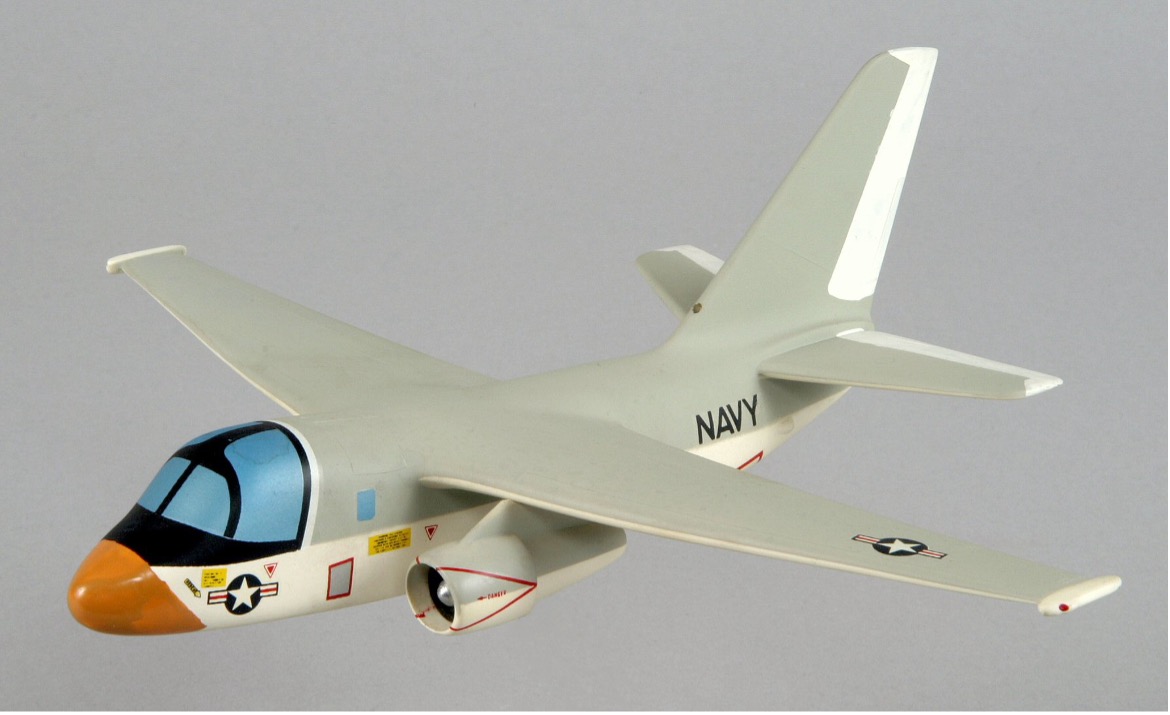USN NWEF North American S3A Viking

MODEL BY:
H. Davidson
Model Scale:
1/72
MODEL ADDED:
N/A
historical significance
First Albuquerque Visit: 1973
Additional Information:
The Lockheed S-3 Viking is a four-crew, twin-engine turbofan-powered jet aircraft. Because of its characteristic sound, it was nicknamed the “War Hoover” after the vacuum cleaner brand.
The S-3 was developed in response to the VSX program conducted by the U.S. Navy (USN) to procure a successor anti-submarine warfare (ASW) aircraft to the Grumman S-2 Tracker. It was designed, with assistance from Ling-Temco-Vought (LTV), to be a carrier-based, subsonic, all-weather, long-range, multi-mission aircraft.
The Lockheed S-3 Viking is a conventional monoplane with a slightly swept cantilever shoulder wing and an almost straight trailing edge. The twin GE TF-34 high-bypass turbofan engines are mounted in nacelles under the wings to provide excellent fuel efficiency and give the Viking the required long range and endurance it will require. Upon entering regular service during February of 1974, it proved to be a reliable workhorse. In the ASW role, the S-3 carried automated weapons and in-flight refueling gear.
Albuquerque’s Kirtland Field was designated Kirtland Air Force Base in 1947, and the Armed Forces Special Weapons Project (AFSWP) operated on Sandia Base. When the United States Air Force established the Air Force Special Weapons Command at Kirtland Air Force Base in 1949, the United States Navy formed a detachment to investigate nuclear capabilities for naval aircraft and assist the AFSWP with naval equipment for demonstrations and training. The Naval Weapons Evaluation Facility (NWEF) operated through the Cold War investigating aircraft-weapon interfaces to provide United States Navy aircraft with nuclear weapons delivery capability.
In 1952 this detachment was designated the Naval Air Special Weapons Facility (NASWF) to conduct special weapons tests on the White Sands Missile Range and Tonopah Test Range in coordination with the United States Atomic Energy Commission. In March of 1961, the NASWF was re-designated the Naval Weapons Evaluation Facility (NWEF) and its mission was expanded to include safety studies on nuclear weapons. The aircraft used for NWEF testing were decorated with the NWEF thunderbird symbol and the NWEF detachment became known as the Rio Grande Navy by its sailors and civilians.
In 1992, with the consolidation of many naval activities and the drawdown of the U.S. defense budget, NWEF became part of the large, multisite Naval Air Warfare Center Weapons Division in China Lake. In 1993 the NWEF was decommissioned and became the first nuclear-weapons-related facility in the Free World to be shut down. As NWEF closed, it transferred some of its remaining people and functions to the China Lake site.
The Lockheed S-3 Viking, Bu No.’s 157997 and 158861, was assigned to the Naval Weapons Evaluation Facility (NWEF) at Kirtland Air Force Base in Albuquerque, New Mexico on October 10, 1973 to perform special weapons evaluation testing on this aircraft.
GALLERY:
SEARCH OUR DATABASE:
